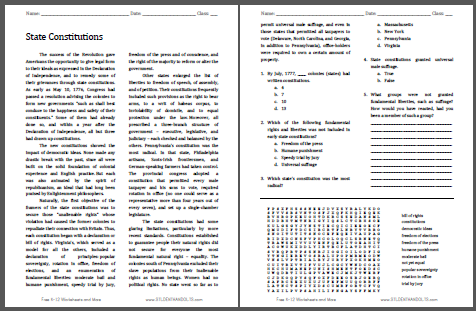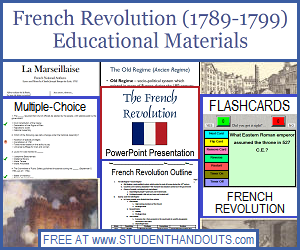State Constitutions |
|
The success of the Revolution gave Americans the opportunity
to give legal form to their ideals as expressed in the
Declaration of Independence, and to remedy some of their
grievances through state constitutions. As early as May 10,
1776, Congress had passed a resolution advising the colonies to
form new governments "such as shall best conduce to the
happiness and safety of their constituents." Some of them had
already done so, and within a year after the Declaration of
Independence, all but three had drawn up constitutions.
Naturally, the first objective of the framers of the state
constitutions was to secure those "unalienable rights" whose
violation had caused the former colonies to repudiate their
connection with Britain. Thus, each constitution began with a
declaration or bill of rights. Virginia's, which served as a
model for all the others, included a declaration of principles:
popular sovereignty, rotation in office, freedom of elections,
and an enumeration of fundamental liberties: moderate bail and
humane punishment, speedy trial by jury, freedom of the press
and of conscience, and the right of the majority to reform or
alter the government. Other states enlarged the list of liberties to freedom of
speech, of assembly, and of petition. Their constitutions
frequently included such provisions as the right to bear arms,
to a writ of habeas corpus, to inviolability of domicile, and to
equal protection under the law. Moreover, all prescribed a
three-branch structure of government – executive, legislative,
and judiciary – each checked and balanced by the others.
Pennsylvania's constitution was the most radical. In that state,
Philadelphia artisans, Scots-Irish frontiersmen, and
German-speaking farmers had taken control. The provincial
congress adopted a constitution that permitted every male
taxpayer and his sons to vote, required rotation in office (no
one could serve as a representative more than four years out of
every seven), and set up a single-chamber legislature. The state constitutions had some glaring limitations, particularly by more recent standards. Constitutions established to guarantee people their natural rights did not secure for everyone the most fundamental natural right – equality. The colonies south of Pennsylvania excluded their slave populations from their inalienable rights as human beings. Women had no political rights. No state went so far as to permit universal male suffrage, and even in those states that permitted all taxpayers to vote (Delaware, North Carolina, and Georgia, in addition to Pennsylvania), office-holders were required to own a certain amount of property. |
 |
|---|
Text courtesy of the U.S. State Department, Bureau of International Information Programs, 2005 |


 The new constitutions showed the impact of democratic ideas.
None made any drastic break with the past, since all were built
on the solid foundation of colonial experience and English
practice. But each was also animated by the spirit of
republicanism, an ideal that had long been praised by
Enlightenment philosophers.
The new constitutions showed the impact of democratic ideas.
None made any drastic break with the past, since all were built
on the solid foundation of colonial experience and English
practice. But each was also animated by the spirit of
republicanism, an ideal that had long been praised by
Enlightenment philosophers.









